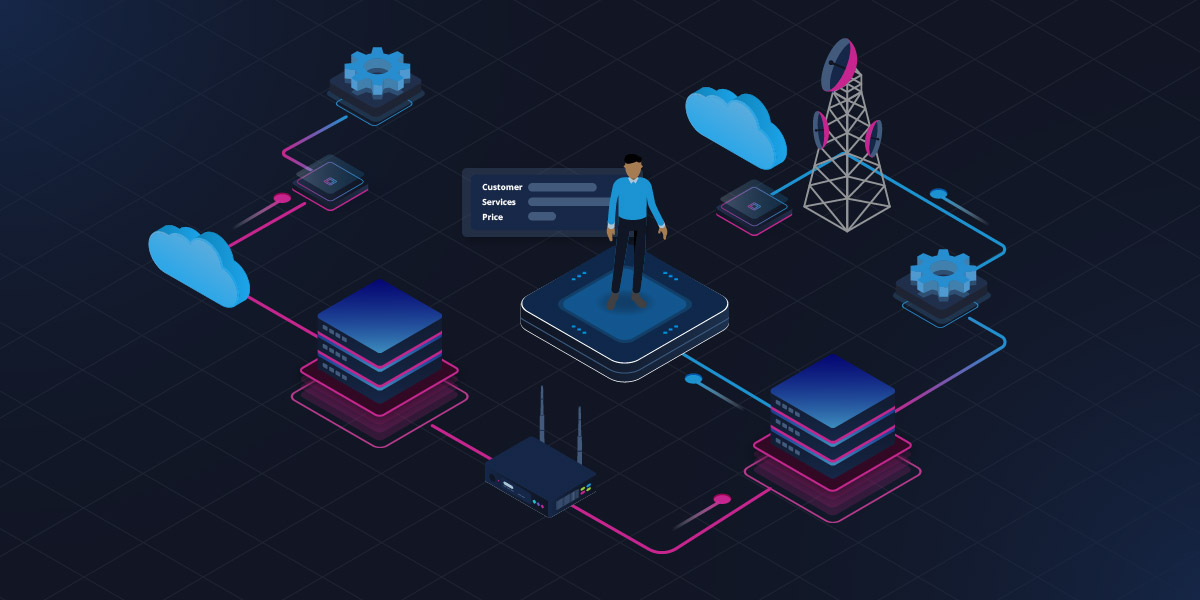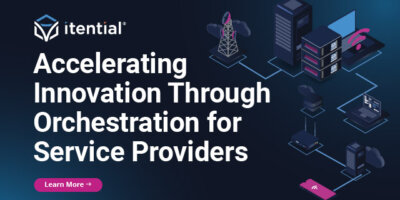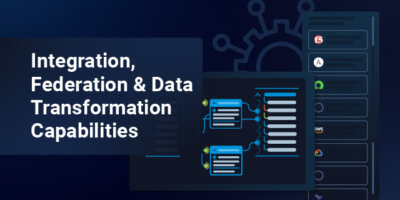Share this

Recent conversations with leaders at both managed service providers and large companies who leverage MSP service offerings have pointed to a central challenge: the complexity of modern network infrastructure is driving up costs and slowing down service delivery. One company I’ve recently spoken to cites infrastructure complexity as the direct cause of their inability to keep prices down, which has already pushed customers away and threatened their business overall.
MSPs are finding it difficult to keep up with this complexity, with multi-vendor and hybrid multi-cloud models becoming the new standard and edge and SD-WAN rising in prominence. When a service must be coordinated across several network domains and external systems, organizations incur additional costs associated with building custom integration code to enable automation.
On the other side, customer demands are only increasing. Everybody wants to move faster and do more. Modern enterprise has high requirements for connectivity, velocity, and scale. For MSPs, customer retention is the business — so something here has to give.
The managed service providers who can compete and win in this environment will be those who implement dynamic, comprehensive solutions for orchestrating services across complex, evolving infrastructure, where integration does not introduce prohibitive costs.
Infrastructure Complexity Today
Infrastructure environments are more complex than ever before, and things are continuing to trend in that direction. Evolutions like cloud migration, the adoption of SD-WAN, moving workloads to the edge, and the security changes that come along with these evolutions have introduced challenges for MSPs looking to deliver services quickly and in a cost-effective manner.
MSPs are often delivering native services in conjunction with many other providers’ services, and sometimes directly delivering services from other types of providers. And the number of partners is only going up. A service offering that must be coordinated across multiple network domains and platforms from multiple vendors is no special case. In addition, you have to consider security — security at the edge, security across multi-cloud workflows, and models like zero-trust access require new approaches and technologies as well.
We’re looking at a world where infrastructure is evolving at a rapid pace, and customers are becoming more demanding without necessarily caring to know specifics. It becomes an arms race for managed service providers to keep up as customers demand more complex services, at greater scale, requiring an increasing number of resources…
At a certain point, MSPs must assess the state of their infrastructure and begin transformation initiatives. The challenge is to find solutions that can streamline and simplify service delivery models without negatively impacting service quality or capacity for innovation.
How MSPs Can Transform: Streamlining Integration to Enable Orchestration
From conversations had with multiple MSPs across many business units, the primary obstacle to the MSP business model today is the cost of integration between different systems, tools, and platforms coming from different vendors.
Leading figures at MSPs have approached me asking about Itential’s capabilities for automatically integrating network automation with external systems and platforms more frequently in the past year or two. This is not a static issue. To stay competitive, MSPs must continue to adopt new technologies, new platforms, and innovate to evolve their service offerings.
If integration is a hindrance today, it will only get worse — unless organizations shift strategies.
MSPs understand that, to offer services quickly and efficiently across complex network infrastructure, they must be able to automate across everything in their environment. Coordinating automation in order to deliver an end-to-end outcome is what’s known as orchestration, and it’s the primary solution for networks to serve the needs of modern business. However, investing in custom code to integrate every new platform and service into your network orchestration stack is impractical: it takes too long and costs too much.
Forward-looking MSPs will look for solutions that lower the cost and delay created by integration needs, allowing full flexibility to adopt and integrate new services or network technologies into an MSP’s environment. The key is finding a new approach to enabling orchestration that is more scalable than building custom integration code — especially as we look ahead to a future where network infrastructure could be even that much more complex than it is today.
Itential: Industry-Leading Orchestration Powered by Patented Integration Capabilities
I’ve seen firsthand the success that companies in the managed services space have when partnering with Itential for network transformation initiatives.
The Itential Automation Platform offers a comprehensive solution for multi-domain orchestration across multiple vendors’ devices, platforms, and services. Of course, there are many platforms on the market that claim to offer multi-vendor orchestration. But the true differentiators for Itential are the robust, scalable capabilities for enabling rapid integration to suit the needs of modern network environments.
Rapid, Multi-Vendor Integration Capabilities Across API & CLI
The Itential Automation Platform leverages published API documents from any external platform to auto-generate an integration in seconds. That allows users of the platform to easily onboard new systems and technologies when they’re adopted by the business in order to include them in orchestrated network service workflows. Crucially, because this solution does not rely on writing code, it removes the cost barrier for integration and enables teams to move much more quickly.
In addition, Itential supports interfaces from all network equipment vendors, so network engineers can incorporate scripts to push config to Cisco devices, Juniper devices, and any other CLI format required.
Automated Data Transformation
Itential’s patented data transformation capabilities leverage JSON to allow users to easily built transformation objects that manipulate data received from an API call in order to pass inputs to the next API call or automation in a workflow. In a multi-vendor environment where services are represented as complex, multi-step workflows, this is extremely important: without these capabilities, network engineers would need to build many custom scripts to manipulate data or do it manually and drastically slow down service delivery.
Our data transformation capabilities are a differentiator in the industry and crucial to enabling zero-touch, end-to-end orchestration for highly complex workflows, crucial for MSPs looking to streamline and simplify the way they can build and deploy services.
These two unique technological capabilities enable our low-code workflow orchestration engine to truly coordinate automated activities across any network and IT platforms, services, and traditional devices, across on-premises infrastructure and multiple cloud environments alike.
MSPs looking to streamline their infrastructure in order to keep costs down and deliver a competitive product are looking to commercial orchestration platforms that enable integration and orchestration across all of their multi-vendor infrastructure. Itential is the best of the bunch. We provide the most cost-effective single-platform solution for leaders at MSPs who want to stay ahead of the curve.




